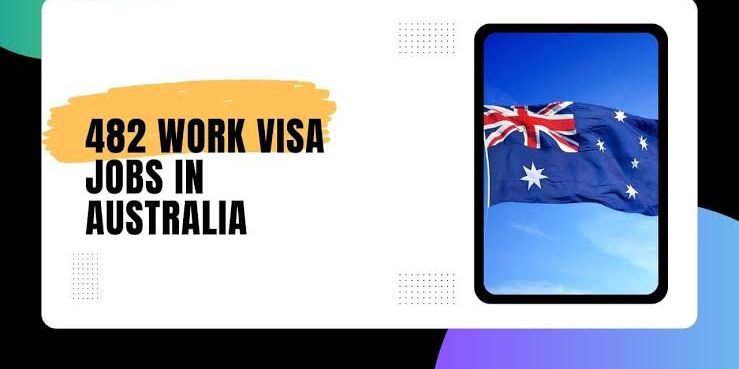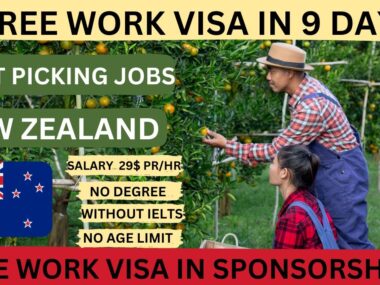An Introduction to Skilled Migration Visas for Carpenters
As a skilled carpenter looking to work in Australia, one of the most viable pathways is through obtaining a 482 Temporary Skill Shortage (TSS) visa. This visa allows skilled workers from overseas countries to fill identified skills shortages in Australia on a temporary basis. In this article, we will provide an in-depth overview of the key details you need to know about obtaining carpenter 482 visa sponsorship in Australia and the types of jobs available in 2024.
Carpenters and joiners have been on the Medium and Long-Term Strategic Skills List (MLTSSL) for several years now, indicating that their skills are in ongoing demand in Australia. This eligibility makes carpentry an occupation that can readily obtain 482 visa sponsorships from Australian employers.
The 482 Visa Process for Carpenters
The 482 visa is a temporary work visa allowing overseas skilled workers to live and work in Australia for up to 4 years. To be eligible, there are some key requirements:
Occupation Eligibility
As mentioned, carpenters and joiners are on the MLTSSL, meeting the baseline occupation eligibility requirement. This list identifies skills in ongoing demand in Australia.
Employer Sponsorship
A carpenter must have a genuine job offer from an approved Australian sponsoring employer. The employer completes the sponsorship process, including demonstrating they have tried to fill the role locally first.
Job Requirements
The job on offer must be full-time, paid above the Temporary Skilled Migration Income Threshold (TSMIT), and aligned to the standard duties of the occupation. The current TSMIT for carpenters is $53,900 AUD.
Character and English Language Requirements
Applicants must meet character checks and have appropriate English language ability aligned to the requirements of the job. For most carpentry roles, this would be an IELTS test score of at least 5.0 overall, with no band score below 4.5.
Visa Application Fees
The visa application charges a significant application fee, currently $7,715 AUD. This covers the primary applicant only – additional family members have additional costs.
Provided all requirements are met, it usually takes around six months from start to finish to obtain a 482 visa through this process once a suitable job offer is secured. During this time, medical exams, police clearances, and skills assessments may need to be undertaken to support the application.
Duration and Extensions
Once granted, an initial 482 visa is valid for up to 4 years. There is potential to extend for a further two years through re-applying while in Australia if ongoing sponsorship from the same employer can be demonstrated. After six years, no further extensions are possible on this visa subclass.
Finding Carpenter 482 Visa Sponsorship Jobs in Australia
As the 482 visa requires an Australian employer to sponsor the application, finding a suitable job offer is a crucial step. Here are some of the best options for carpenters seeking sponsorship jobs in 2024:
Job Boards and Employer Listings
Major online job boards in Australia, like Seek and Indeed, often feature carpentry jobs posted by sponsorship-ready employers. Search for keywords like “carpenter” and “joiner” plus “482 visas” or “sponsorship”.
Employer group pages like the Australian Constructors Association also maintain job boards highlighting member companies actively recruiting overseas workers.
Recruitment Agencies
Many skilled migration-focused recruitment agencies in Australia specialize in placing 482 applicants. They maintain their own job boards and can actively match carpenters to employer clients seeking sponsored workers.
Direct Employer Contact
For those with strong English and connections, directly contacting medium-large contracting companies is another approach. Search company websites, LinkedIn profiles, etc, for international recruitment contacts.
State Nomination Programs
Some states, like Western Australia, offer state nominations to expedite 482 visas. Employers registered with these programs may have dedicated positions for sponsored carpenters.
The most in-demand locations in 2024 are expected to be:
- New South Wales (Sydney metro area)
- Victoria (Melbourne metro area)
- Queensland (Brisbane, Gold Coast, Sunshine Coast)
- Western Australia (Perth)
Major construction projects driving demand include infrastructure, commercial buildings, residential high-rises, and mining sector work. Regional areas with project activity may also offer opportunities.
Patience, persistence, and flexibility are key when searching – it can take several months to secure an appealing job offer to support a 482 visa application. Having practical skills, qualifications, and experience will make candidates more competitive.
Pathways from 482 Visa to Permanent Residency
A significant benefit of obtaining carpentry work in Australia through the 482 visa is that it opens up pathways to potentially gain permanent residency down the track. Here are some common options:
Employer Nomination Scheme (ENS)
If sponsored continuously for two years on the 482, employers can consider nominating skilled workers under the ENS stream. This provides a direct pathway to permanent residency through the Employer Nomination Visa (Subclass 186).
Regional Visa Options
Living and working in specified regional areas for two years on the 482 can make carpentry workers eligible for reduced requirements regional visas like the Regional Skilled Work Visa (Subclass 191).
Skilled Work Regional (Provisional) Visa
Sponsored regional work for one year activates this provisional pathway visa (Subclass 491), providing a pathway to also consider the permanent Skilled Independent Visa (Subclass 189) later on.
Skilled Independent Visa
While not a direct pathway, carpenters who achieve proficient English and meet points factor requirements after working in Australia may be able to independently apply for the Skilled Independent Visa (Subclass 189) without an employer sponsor.
Staying in frequent contact with migration agents can help assess permanent residency options and requirements once in Australia on a 482 visa. Maximizing regional or continuing employment opportunities enhances chances of transitioning to more secure resident status down the track.
Job Outlook for Carpenters in Australia 2024
The construction industry continues to drive strong projected demand for carpenters in Australia over the next few years. Some key industry insights:
- Infrastructure spending – Major transport, road, rail, and energy projects planned for 2024-2026 continue nationwide. Skilled carpenters are critical for framework construction.
- Residential building – Population growth and post-pandemic demand driving high-density apartment projects. Carpentry skillsets remain in high demand for formwork, framing, and fittings.
- Commercial building – Retail, warehouse, and office space construction are supporting a strong pipeline of projects through 2025, which require carpentry teams.
- Mining sector work – Remote operation camp construction and maintenance requiring specially trained carpentry crews on fly-in fly-out rosters.
- Government investment – Multi-billion dollar stimulus backing skills priority areas like construction is sustaining industry activity levels.
- Skills shortages – Despite COVID-19 impacts, craft trades like carpentry continue to face chronic national shortages due to lifestyle preferences and an aging workforce.
The ongoing construction volume combined with skills gaps suggests that Australian carpentry career opportunities will remain readily available for approved 482 visa holders in the next two years at least. This enhances chances of job security, retention, and potential permanent residency outcomes.
Considerations When Pursuing Carpenter Roles in Australia
While this pathway provides rewarding career potential, there are also some key factors to weigh up carefully before initiating a move to Australia on a 482 visa:
- Australia’s climate extremes – Carpentry work occurs across all weather and temperatures; tropical north to sub-arctic alpine conditions.
- Remote rostering – Some mining sector roles involve extended time living/working at remote mining campsites.
- Living costs – Housing, utilities, and general costs of living in Australia, especially cities, tend to be high compared to many source countries.
- Isolation from family/friends – Initial working periods may mean limited opportunities to return home or have visits due to strict entry/quarantine protocols.
- English language demands – Strong communication skills in English are important for safe work practices and integration into team environments.
- Healthcare access – On temporary visas, healthcare access is limited to only work-related injuries covered by employers. Public insurance is not permitted.
- Tax regulations – Australian tax residence rules and reporting obligations differ from other jurisdictions and require careful consideration.
For those with young families, existing ties, or less developed independence, the 482 visa path may prove challenging despite employment opportunities on offer. Having realistic expectations is prudent before initiating the long-term visa journey.





